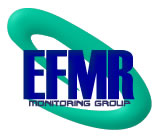All Exelon nuclear stations are robust and fortified facilities,
capable of withstanding the most severe weather, including hurricanes
and floods. Extra precautions have been taken at each Pennsylvania
facility, including increased staffing, pre-staging of emergency
equipment, activating back-up communications, and securing outside
equipment and materials.
“These extra storm precautions make
our safe facilities even safer,” said Chris Mudrick, Exelon Senior VP
for Mid-Atlantic Operations. “Our plants are designed to withstand the
most severe weather conditions and we will continue to take actions that
keep our stations, our workers and the public safe.”
Download PDF
BRAIDWOOD STATION, UNIT NOS 1 AND 2; BYRON
STATION, UNIT NOS. 1 AND 2; CLINTON POWER STATION, UNIT NO.1; DRESDEN
NUCLEAR POWER STATION, UNIT NOS. 1, 2AND 3; LASALLE COUNTY STATION, UNIT
NOS. 1 AND 2; LIMERICK GENERATING STATION, UNIT NOS. 1 AND 2; OYSTER
CREEK NUCLEAR GENERATING STATION; PEACH BOTTOM ATOMIC POWER STATION,
UNIT NOS. 1,2, AND 3; QUAD CITIES NUCLEAR POWER STATION, UNIT NOS. 1 AND
2; AND THREE MILE ISLAND NUCLEAR STATION, UNIT 1 - REQUEST FOR
ADDITIONAL INFORMATION REGARDING PHYSICAL SECURITY PLAN, TRAINING AND QUALIFICATION PLAN, AND SAFEGUARDS CONTINGENCY PLAN
Download ML12277A238
